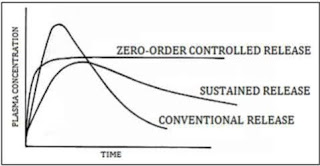Antibiotic
Azithromycin
Azithromycin was first approved for human use in 1988 by the Croatian pharmaceutical company Pliva1. According to the World Health Organization (WHO), there is a growing concern about the increasing resistance of bacteria to antibiotics, including azithromycin. The WHO report reveals high levels of resistance in bacteria causing life-threatening bloodstream infections, as well as increasing resistance to treatment in several bacteria causing common infections in the community based on data reported by 87 countries in 20202. However, the report does not mention the specific organism responsible for resistance to azithromycin.
Erythromycin
Erythromycin was first isolated in 1952 from the bacteria Saccharopolyspora erythraea 1. According to the Centers for Disease Control and Prevention (CDC), the percentage of invasive Group A Streptococcus (GAS) infections that are resistant to erythromycin has nearly tripled in 8 years 2. However, the CDC does not mention the specific organism responsible for resistance to erythromycin.
Vancomycin
Vancomycin is a glycopeptide antibiotic that was first approved for medical use in the United States in 19581. According to the Centers for Disease Control and Prevention (CDC), vancomycin-resistant enterococci (VRE) are bacteria that have developed resistance to vancomycin, an antibiotic that is used to treat some drug-resistant infections 2. The CDC states that if these germs develop resistance to vancomycin, they become VRE 2. The mechanism for relative resistance to vancomycin that has been seen in staphylococci differs from that of acquired glycopeptide resistance in enterococci, but the potential spread of enterococcal vancomycin resistance determinants to other species will remain a concern 3.
Meropenem
Meropenem is a carbapenem antibiotic that was first approved for medical use in the United States in 19961. According to the Infectious Diseases Society of America (IDSA), carbapenem-resistant Enterobacterales (CRE) are bacteria that have developed resistance to carbapenems, a class of antibiotics that includes meropenem 2. The IDSA provides guidance on the treatment of infections caused by CRE, which can be accessed through their website 2. The IDSA report does not mention the specific organism responsible for resistance to meropenem.
Colistin
Colistin is an antibiotic medication that was first approved for medical use in the United States in 1970 1. According to the World Health Organization (WHO), colistin is classified as a critically important antibiotic for human medicine 1. The WHO report reveals that colistin-resistant bacteria have been discovered in several countries, including the UK, and pose a significant threat to public health 2. The European Medicines Agency (EMA) has proposed measures to reduce the use of colistin in animals to manage the risk of resistance 3.
Ciprofloxacin
Ciprofloxacin is a fluoroquinolone antibiotic that was first approved for medical use in the United States in 19871. According to the World Health Organization (WHO), the misuse and overuse of antimicrobials are the main drivers in the development of drug-resistant pathogens. As a result of its widespread use to treat minor infections readily treatable with older, narrower-spectrum antibiotics, many bacteria have developed resistance to this drug in recent years, leaving it significantly less effective than it would have been otherwise 2.
The WHO report reveals that 28% of C. jejuni and 38% of C. coli isolates were resistant to ciprofloxacin in 2017 3. However, I could not find any information on the specific organism responsible for resistance to ciprofloxacin.
Imipenem
Imipenem is a carbapenem antibiotic that was first approved for medical use in the United States in 1985 1. According to the Centers for Disease Control and Prevention (CDC), carbapenem-resistant Enterobacterales (CRE) are bacteria that have developed resistance to carbapenems, a class of antibiotics that includes imipenem 2. The CDC provides guidance on the treatment of infections caused by CRE, which can be accessed through their website 2.
The CDC report does not mention the specific organism responsible for resistance to imipenem.
Gentamicin
Gentamicin is an aminoglycoside antibiotic that was first approved for medical use in the United States in 1964 1. According to the Centers for Disease Control and Prevention (CDC), some Enterobacteriaceae, Pseudomonas spp., Enterococcus spp., Staphylococcus aureus, and other Staphylococcus spp. have varying degrees of resistance to gentamicin 1.
Tetracycline
Tetracycline is a broad-spectrum antibiotic that was first discovered in the 1940s and exhibited activity against a wide range of microorganisms including gram-positive and gram-negative bacteria, chlamydiota, mycoplasmatota, rickettsiae, and protozoan parasites 1. Tetracycline was first approved for prescription use in 1954 2.
According to the Encyclopedia Britannica, tetracycline resistance is often due to the acquisition of new genes, which code for energy-dependent efflux of tetracyclines or for a protein that protects bacterial ribosomes from the action of tetracyclines. Furthermore, a limited number of bacteria acquire resistance to tetracyclines by mutations 2.
Trimethoprime
Trimethoprim is a synthetic antimicrobial agent that was first used for the treatment of infections in humans in 1962 1. According to the Oxford Academic Journal, resistance to trimethoprim-sulfamethoxazole (TMP-SMZ) or TMP alone is still considered the first-line drug of choice in the treatment and prophylaxis of patients with urinary tract infections, although increased bacterial resistance to these agents has been linked with treatment failure 2. The report also states that resistance to TMP-SMZ among isolates of E. coli varies greatly, from 10% to 70% in different parts of the world 2.
Linezolid
Linezolid is an antibiotic used for the treatment of infections caused by Gram-positive bacteria that are resistant to other antibiotics 1. Linezolid was discovered in the mid-1990s and was approved for commercial use in 2000 1.
According to the Clinical Infectious Diseases Journal, acquired resistance to linezolid, the first approved oxazolidinone, has been selected in laboratory experiments and has been observed in clinical isolates of gram-positive cocci. This resistance has typically been associated with single-nucleotide changes in varying numbers of copies of the genes encoding 23S ribosomal RNA 2. Although resistance to linezolid remains uncommon, the development of resistance by clinical isolates should prompt increased attention to susceptibility testing for this agent and should be taken into account in consideration of the therapeutic use of this drug 2.
In general, linezolid is active against most Gram-positive bacteria that cause disease, including streptococci, vancomycin-resistant enterococci (VRE), and methicillin-resistant Staphylococcus aureus (MRSA) 2. However, resistance to linezolid has been observed in clinical isolates of gram-positive cocci 2.
Ceftriaxone
Ceftriaxone is a third-generation cephalosporin antibiotic that was first approved for use by the Food and Drug Administration (FDA) in 1982 1. According to the Centers for Disease Control and Prevention (CDC), ceftriaxone resistance in Enterobacterales is typically the result of production of extended-spectrum beta-lactamases (ESBLs) or AmpC β-lactamases 2. The genes encoding these enzymes are often co-located with other antibiotic resistance genes leading to resistance to aminoglycosides, quinolones, and trimethoprim/sulfamethoxazole 2.
The prevalence of ceftriaxone-resistant Salmonella has been increasing in recent years 3. A study conducted in China found that the resistance rates for ceftriaxone, ciprofloxacin, and levofloxacin were significantly higher in younger children than in older children 3. The resistance genes in the ceftriaxone-susceptible isolates were detected by PCR, and ceftriaxone-resistant Salmonella were selected for further whole-genome sequencing. Whole-genome analysis showed that serotype Typhimurium and its monophasic variant were the most prevalent in ceftriaxone-resistant isolates 3. However, the other isolates were diverse, which included Enteritidis, Indiana, Derby, Kentucky, Goldcoast, Muenster, Virchow, Rissen, Kedougou, Uganda, and Kottbus 3.



Comments
Post a Comment
Thanks